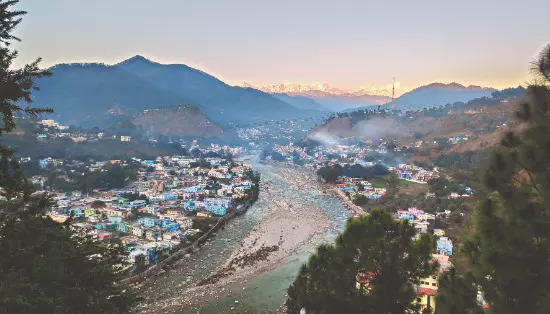Unscientific mining pushing Uttarakhand’s Bageshwar toward disasters: Govt panel to NGT

New Delhi: A government-appointed expert committee has warned that mining operations in Uttarakhand’s Bageshwar district are destabilising slopes, threatening villages and farmland, and disrupting water resources in the fragile Himalayan environment. In a report titled Geological Assessment and Recommendations for Sustainable Mining Practices in Bageshwar District, submitted to the National Green Tribunal (NGT) on July 30, the panel called for sweeping reforms in mining methods and tighter monitoring to address mounting risks.
The study followed complaints from residents about landslides, cracks in homes, drying springs, and declining crop yields. The Kanda-Kanyal valley region in Bageshwar holds some of the richest deposits of soapstone in India, a mineral widely used in industries ranging from paper and paint to cosmetics and construction. The committee noted that the situation bore similarities to the 2023 crisis in Jyotirmath, where land subsidence led to structural damage across the town and surrounding agricultural land.
The NGT had sought the assessment after local communities
alleged that mining was being carried out without adequate environmental safeguards. The investigation involved experts from the Geological Survey of India, the Uttarakhand Landslide Mitigation and Management
Centre, the Department of Geology and Mining, and the Indian Institute of Remote Sensing. The team inspected 61 mines across Bageshwar, Kanda, and Dugnakuri tehsils and found that most sites had altered natural slopes through steep vertical cuts without the use of proper benches, making the terrain “highly vulnerable to landslides” and rockfalls.
The panel documented visible cracks, ground subsidence, and instances of rockslides. It observed that debris from excavation was frequently dumped into natural streams, blocking drainage channels and leading to waterlogging and slope failures. Some leases were found to overlap with villages, agricultural fields, and water sources, posing a direct threat to local populations.
The district’s location in seismic zone V, among the most earthquake-prone areas in the country, was cited as a factor that increases the danger posed by poorly regulated mining. The committee stated that unregulated excavation in such a zone could intensify ground instability, especially in the absence of adequate oversight.
It found that there was no systematic record of how slopes had been modified over time. Satellite imagery confirmed land deformation around several mining sites, indicating the potential for further subsidence. The report also detailed how mining activities had disrupted natural drainage patterns, leading to both depletion and contamination of groundwater.
Several springs, vital for drinking water and irrigation, had either dried up or seen their flow significantly reduced. Reclamation efforts at exhausted mines were found to be largely superficial, with no meaningful measures in place to ensure long-term slope stability or ecological restoration.
The committee recommended that mining operations be subject to scientific monitoring using a local seismic network to detect micro-earthquakes and satellite-based SAR technology to track ground deformation. It advised that all existing and proposed mines undergo mandatory slope stability analyses, to be reviewed by established research institutions. A geo-referenced database of mining leases was proposed to prevent encroachment and identify risk-prone zones, along with a reassessment of leases that overlap with villages, farmlands, or water sources.
The experts urged aquifer mapping to better understand the long-term impact on groundwater reserves and called for sustainable mining practices, including controlled blasting, proper drainage systems, engineered slope reinforcement, systematic waste disposal, and effective site reclamation. They further stressed that debris must not be dumped into streams and insisted on regular field inspections to ensure compliance with environmental norms. While noting that regulated riverbed mining may not compromise seismic stability, the panel cautioned that in-situ mining in Himalayan districts such as Bageshwar should proceed only with “utmost care.”with agency inputs



